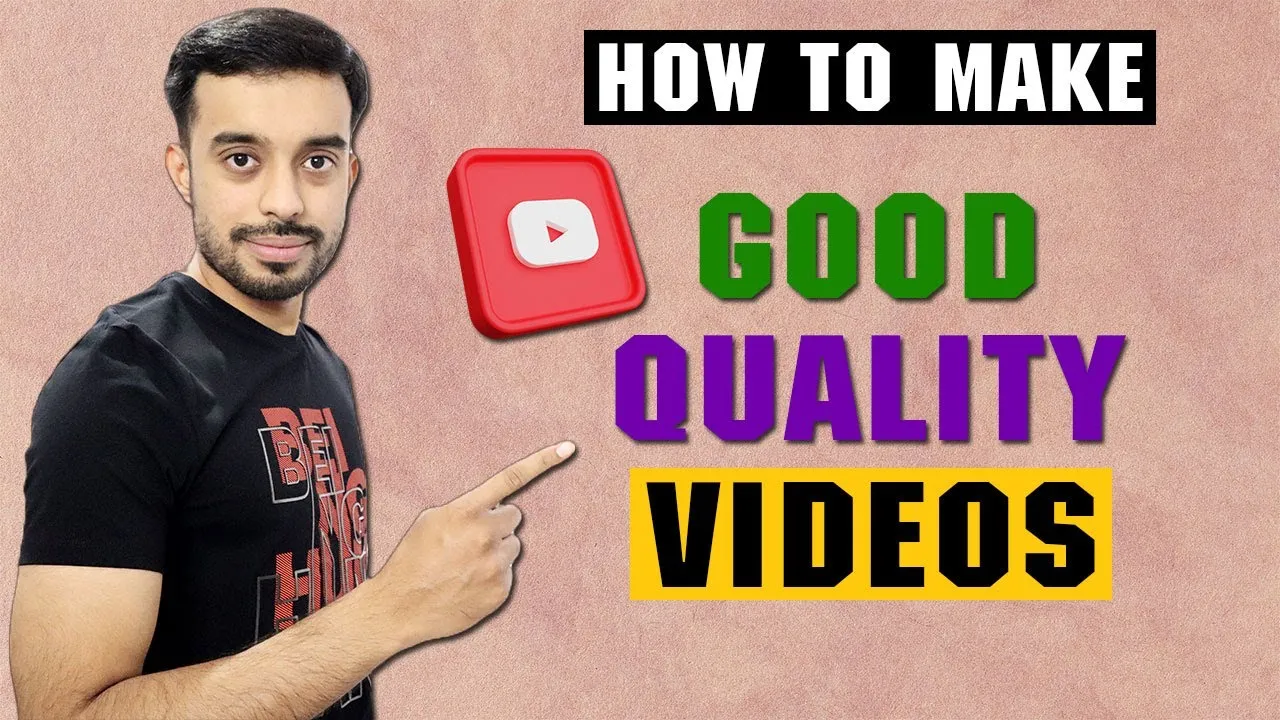In today's digital world, video content reigns supreme, and YouTube is the go-to platform for creators and viewers alike. With millions of videos uploaded every day, ensuring your content stands out is crucial. Enhancing video quality not only captivates your audience but also boosts engagement and retention. In this blog post, we’ll explore effective techniques to elevate your YouTube videos, helping you deliver a more polished and professional experience that resonates with viewers.
Understanding YouTube Video Quality

YouTube video quality is determined by several factors, including resolution, bitrate, and frame rate. Each of these elements plays a crucial role in the overall viewing experience. Let’s break them down:
- Resolution: This refers to the number of pixels displayed in a video. Common resolutions include:
- 480p (Standard Definition)
- 720p (HD)
- 1080p (Full HD)
- 1440p (2K)
- 2160p (4K Ultra HD)
- Bitrate: The bitrate measures the amount of data processed per second in your video. A higher bitrate usually results in better quality but also increases file size. YouTube recommends a bitrate range based on the resolution and frame rate. For example:
- Frame Rate: This refers to how many frames are displayed per second. Common frame rates are 24, 30, and 60 fps. Higher frame rates can create smoother motion, which is especially important for action-packed or fast-paced content.
Higher resolutions provide clearer, crisper visuals, but they also require more bandwidth for streaming.
| Resolution | Bitrate (Mbps) |
|---|---|
| 1080p at 30fps | 8-12 Mbps |
| 1080p at 60fps | 12-15 Mbps |
| 4K at 30fps | 35-45 Mbps |
Understanding these components is essential for creators looking to enhance their video quality. By optimizing resolution, bitrate, and frame rate, you can significantly improve your content's overall appeal and effectiveness.
Also Read This: Is YouTube Removing Banners? The Future of YouTube Channel Art
Importance of Video Effects

Video effects play a crucial role in elevating the overall quality and appeal of your YouTube videos. They not only grab the attention of viewers but also enhance storytelling and create a more engaging viewing experience. Imagine watching a tutorial that seamlessly transitions between scenes or a travel vlog that uses slow motion to capture breathtaking moments. These effects help convey emotions and highlight significant details, making your content more memorable.
Moreover, utilizing video effects can improve brand identity. Consistent use of specific effects can become a signature style that viewers recognize and associate with your channel. This is particularly important in a crowded platform like YouTube, where standing out is key. For example, think about how popular channels often employ unique transitions or color grading that sets their videos apart.
Finally, the right effects can enhance the professionalism of your content. A well-edited video with smooth transitions, appropriate filters, and polished graphics signals to viewers that you take your craft seriously. This can lead to increased viewer retention, higher subscription rates, and ultimately, greater success on the platform. So, whether you're a seasoned creator or just starting, investing time in understanding and applying video effects is essential for creating compelling content.
Also Read This: How to Watch an Age-Restricted Video on Dailymotion
Types of Effects to Consider
When it comes to enhancing your videos, there's a plethora of effects to choose from. Here are some types to consider:
- Transition Effects: Smooth transitions between clips maintain flow and coherence. Examples include fades, wipes, and zooms.
- Text Effects: Adding animated text can emphasize key points or titles. Think lower thirds or dynamic overlays that catch the eye.
- Color Grading: Adjusting colors can dramatically affect the mood of your video. Warm tones might evoke a cozy feeling, while cooler tones can create a more serious atmosphere.
- Slow Motion and Speed Ramping: These effects can heighten drama or emphasize key moments, especially in action-packed scenes or tutorials.
- Filters and Overlays: Using filters can enhance the overall aesthetic of your video, while overlays like light leaks can add a creative touch.
Incorporating these effects thoughtfully can transform your content from ordinary to extraordinary. Just remember to use them sparingly; the goal is to enhance your video, not distract from it!
Also Read This: Troubleshooting LinkedIn Messaging Issues
Using Editing Software for Effects
Editing software is a game-changer when it comes to enhancing the quality of your YouTube videos. Whether you're a newbie or a seasoned creator, using the right tools can make your content stand out. Here’s how you can leverage editing software for that professional touch:
- Color Grading: Adjusting colors can dramatically improve the mood of your video. Use tools like Adobe Premiere Pro or DaVinci Resolve to tweak brightness, contrast, and saturation.
- Transitions: Smooth transitions between scenes can keep viewers engaged. Consider using wipes, fades, or creative cuts. Many software platforms offer built-in transition effects.
- Text Overlays: Adding text can clarify key points or highlight important information. Use eye-catching fonts and colors to make your overlays pop.
- Audio Enhancement: Clean up background noise and balance audio levels. Software like Audacity or Adobe Audition can help you achieve clear and crisp sound quality.
- Special Effects: Want to add some flair? Consider using effects like slow motion, speed ramping, or even animated graphics to create a more dynamic viewing experience.
Remember, the key is to enhance your video without overwhelming your audience. Always preview your edits and gather feedback to ensure you’re heading in the right direction!
Optimizing Video Settings for Upload
When uploading your video to YouTube, the settings you choose can significantly affect its quality. Here are some essential tips to optimize your video settings:
- Resolution: Always upload your video in the highest resolution possible. Aim for at least 1080p (Full HD) or 4K if your original footage allows it.
- Bitrate: Adjust the bitrate based on your video’s resolution. A higher bitrate typically means better quality; for 1080p, aim for 8,000 - 12,000 kbps.
- Frame Rate: Stick to a consistent frame rate, ideally 30 or 60 frames per second, to avoid choppy playback.
- File Format: YouTube supports various formats, but MP4 is the most recommended due to its balance of quality and file size.
- Audio Settings: Use AAC audio codec at 48 kHz for clear sound quality. Ensure your audio levels are balanced before uploading.
By taking the time to optimize these settings, you can ensure that your audience enjoys the best possible viewing experience. Happy uploading!